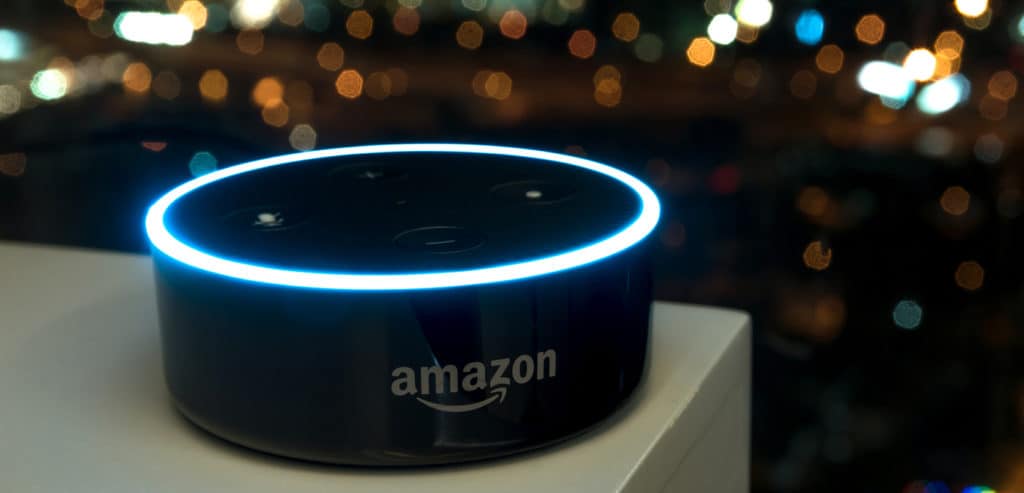
Michael Hazelden, SVP, product strategy, OrderDynamics
A recent survey from the International Council of Shopping Centers (ICSC) revealed, “37% of consumers have used a digital assistant (i.e., Siri) to build shopping lists or to place orders to later pick up items in stores.” In addition, MindMeld, a provider of intelligent conversational voice interfaces, estimated that 10 to 15 million devices equipped with digital assistants would be in use by early 2017.
Major players like Amazon and Google are leading the pack with digital assistant technology. In March, Amazon announced enhancements and new programs associated with its digital assistant technology, Alexa. First, Amazon announced that developers could build and host Alexa Skills for free using Amazon Web Services. This was followed by the launch of Alexa voice shopping for Amazon Prime Now. All the while, more providers continue to jump on board; most recently, Samsung announced its digital assistant, Bixby.
It is clear from consumer interest and investments from the big guns that momentum is building towards the ubiquitous adoption of digital assistant technology. But is the time right for all retailers to invest today?
With notable brands and retailers, such as Starbucks and Adobe, finding ways to leverage these technologies, it’s certainly time for retailers to start asking themselves how they can use digital assistants to build their brand, drive traffic to their websites, convert more sales and create a better customer experience. However, this is not the place for retailers to dive in blindly and begin offering digital assistant capabilities simply because Amazon is doing so. There is much to learn and, before they take the plunge, retailers need to make sure they understand the technology, have the right framework in place and know what they want to accomplish by using it.
Outline your goals
What is the goal of providing digital assistant to customers? Do you want customers to place orders using a digital assistant? Or do you want them to track their orders? Or simply ask a question about a product detail and its availability?
Like any major undertaking or investment, retailers need to take a step back and define the goals they want to achieve with intelligent digital assistants. For simple goods and services, such as a customer’s regular Starbucks order or favorite laundry detergent, using a digital assistant makes perfect sense. It can be an obvious solution to ease the ordering process for shoppers. But for apparel and specialty retailers, ordering through a digital assistant may be far too complex (for now).
However, that doesn’t mean there aren’t areas where digital assistants might come in handy for these retailers and their customers. For example, a digital assistant may be able to help a customer find an item in her local store, provide important product information, or track her click-and-collect order.
Learn to speak the language
For every retailer, now should be a time of research and discovery into the world of digital voice assistants, whether it’s Amazon Alexa or Google Assistant. Most retailers probably don’t have someone on staff that is well versed in the language of Amazon Alexa Skills or Google Conversation Actions. In order for retailers to achieve their defined goals, they need to first understand the language so that they can properly program the assistant with new skills or actions.
Both Amazon and Google offer free online instruction, templates and exercise for learning to use their specific assistant APIs. But even before you begin programming, you need to decide how you want the assistant to interact with your shoppers. Do you simply want someone to be able to tell his digital assistant, “I’m out of laundry detergent,” and the assistant to automatically place the order for the last laundry detergent the customer placed?
Or do you want the process to be more conversational? For example:
Customer: “I’m out of laundry detergent.”
Digital Assistant: “Would you like me to re-order ‘Laundry Detergent X’?
Customer: “Yes.”
Digital Assistant: “I placed your order for ‘Laundry Detergent X’.”
And so on. No matter what language format you choose to use, make sure it aligns with your overall brand and business strategy so that customers have a consistent experience in how they interact with your brand and products.
Create a connection
Taking advantage of digital assistant ordering is not limited to Amazon sellers. Any retailer can easily create an Amazon Alexa Skill, and those who use Amazon Web Services can even do it for free. As Starbucks has recently demonstrated, retailers can enable Alexa to process orders directly to the retailer. EBags and 1-800-Flowers are two additional examples of retailers using Amazon Alexa Skills to drive sales and provide order status updates. Domino’s has even empowered its customers to order a pizza through Google Assistant by developing its own unique Action on that platform.
To make the connection between Amazon Alexa or Google Assistant and a retailer’s e-commerce platform or order management system, retailers first need to have the correct APIs in place. These APIs may need to be developed in-house or may already be available through the retailer’s order management provider. These can easily be turned on and integrated with the digital assistants with minimal effort.
The bottom line
With any major investment, retailers need to not only understand the technology but also decide if it’s a good fit for the overall brand and business strategy. Next, take the time to consider if and how the advantages the technology boasts today will actually work to serve your customers. And while it’s not critical for retailers to run out and invest millions in digital assistant technology and capabilities yet, it is time to learn the language, implement the framework and to start considering the possibility that this is the future of shopping and retail.
OrderDynamics provides order management software for online retailers.
Favorite